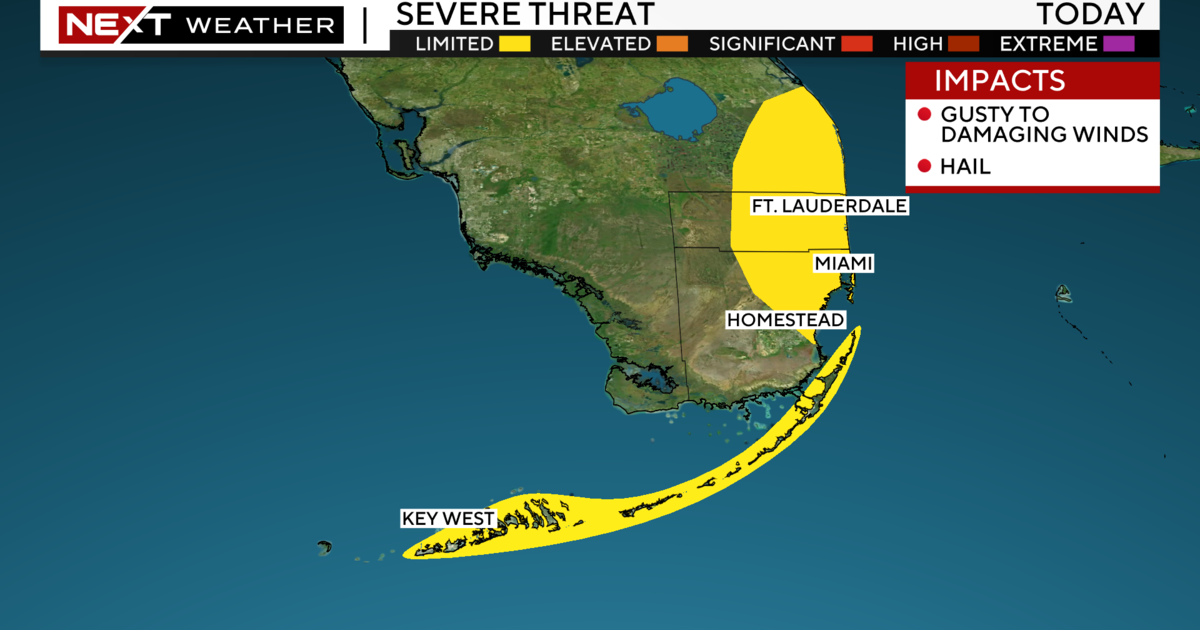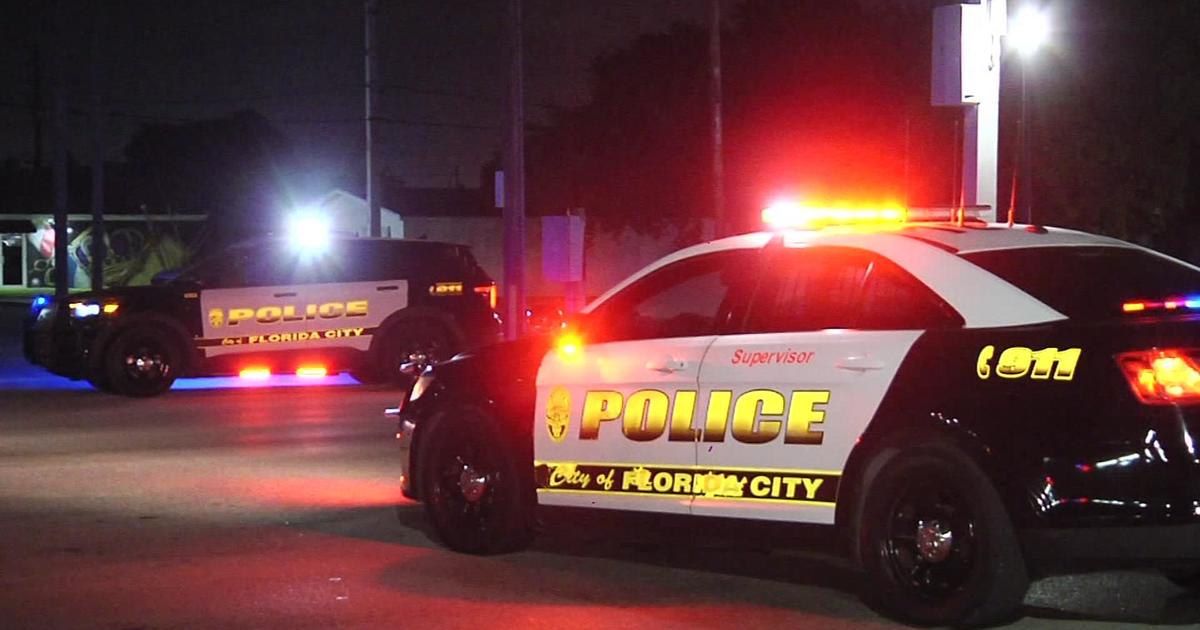U.S. Death Toll At 10 As Weakening Matthew Rakes East Coast
Follow CBSMIAMI.COM: Facebook | Twitter
CHARLESTON, S.C. (CBSMiami/AP) — A weakening Hurricane Matthew continued its march along the Atlantic coast Saturday, slamming two of the South's most historic cities and some of its most popular resort islands, flattening trees, swamping streets and knocking out power to hundreds of thousands.
The storm was blamed for at least four deaths in the U.S., all in Florida. In its long wake, it also left at least 470 dead in Haiti in one hard-hit district alone, according to officials, with other stricken areas still unreachable four days after the disaster struck.
Matthew raked the Georgia and South Carolina coasts with torrential rain and stiff winds. But for most of its run up the U.S. coastline, it center, or eye, mercifully stayed just far enough offshore that coastal communities didn't feel the full force of its winds.
In many communities in the storm's wake, the reaction was relief that it was nowhere near as bad as many feared.
"We are all blessed that Matthew stayed off our coast," Florida Gov. Rick Scott said. "We are blessed that we didn't have a direct hit."
At 10 a.m., Matthew was centered about 30 miles southeast of Charleston, its winds having dropped to 75 mph, a Category 1 storm. That was down from 145 mph when the storm roared into Haiti. It was moving at 12 mph.
Among the cities bracing for its effects later in the day were Myrtle Beach, South Carolina, and Wilmington, North Carolina. From there, the storm was expected to veer out to sea and loop back around toward the Bahamas, though as a much-weakened storm.
North Carolina Gov. Pat McCrory warned people not to let their guard down just because Matthew was losing steam.
In Savannah, Georgia, a historic town of moss-draped squares and antebellum mansions, floodwaters several feet deep submerged a long stretch of President Street, which links downtown to the highway to Georgia's Tybee Island. A woman was seen staggering through waters up to her neck.
The shivering woman made it to the water's edge. A bystander handed her a sheet, which she wrapped around her neck.
"I'm homeless," said the woman, who identified herself only as Valerie. "I've got nine kids, but I couldn't evacuate with them."
Matthew also brought some of the highest tides on record along the South Carolina coast. Streets in Charleston — a city of handsome pre-Civil War homes, church steeples and romantic carriage rides — were flooded.
Leigh Webber watched the torrential rains from the porch of her home in the city's historic district.
"It's not as bad as maybe I was expecting," she said.
"I feel badly for a lot of the businesses downtown that have been closed since Wednesday," she added. "I noticed a lot of hotels were completely closed. I know some weddings were canceled and it was a huge financial loss for a lot of people."
South Carolina's golf-and-tennis resort Hilton Head Island also took a blow as the eye of the storm passed 20 miles to the east. At least one gust of 87 mph was recorded at Hilton Head.
The two roads onto the island of 40,000 people were blocked by fallen pine trees, and many roads were under water. Signs were blown over, and power was out across the island.
Chandler Brunson and was among those trying to go back to her home after evacuating, but found her path blocked.
"I think we're going to have a pine tree splitting our house," she said. "That's what I'm afraid of."
Residents of Brunswick, Georgia, woke to roads covered by water or fallen trees and downed power lines. All access points to nearby St. Simons Island from the mainland were blocked. Tybee Island also took a beating, with gusts clocked at 93 mph.
Nearly a half-million electric customers in South Carolina were left without power, and 250,000 were in the dark in coastal Georgia.
Matthew — the most powerful hurricane to threaten the Atlantic Seaboard in more than a decade — set off alarms as it closed in on the U.S., triggering evacuation orders covering at least 2 million people.
But in the end, the hurricane skirted Florida's heavily populated Miami-Fort Lauderdale-West Palm Beach area and sideswiped cities farther north, including Daytona Beach, Vero Beach, Cape Canaveral and Jacksonville, without its center ever actually coming ashore in Florida.
The damage consisted largely of fallen trees, downed power lines, eroded beaches and flooded roads. In northeastern Florida, the storm gouged out several large sections of the coastal A1A highway north of Daytona Beach.
Well south of the storm, things quickly began returning to normal Saturday, with all three of Orlando's main theme parks — Walt Disney World, Universal Studios and SeaWorld — reopening in the morning.
The deaths in Florida included an elderly St. Lucie County couple who died from carbon monoxide fumes while running a generator in their garage and two women who were killed when trees fell on a home and a camper.
On Friday, the storm raked yet another historic Southern city: St. Augustine, Florida, which was founded by the Spanish in the 1500s and includes a 17th-century stone fortress and many historic homes turned into bed-and-breakfasts. The city was left awash in rain and gray seawater.
Police blocked all access to the city early Saturday as power crews repaired lines and downed trees were cut up.
(TM and © Copyright 2016 CBS Radio Inc. and its relevant subsidiaries. CBS RADIO and EYE Logo TM and Copyright 2016 CBS Broadcasting Inc. Used under license. All Rights Reserved. This material may not be published, broadcast, rewritten, or redistributed. The Associated Press contributed to this report.)



